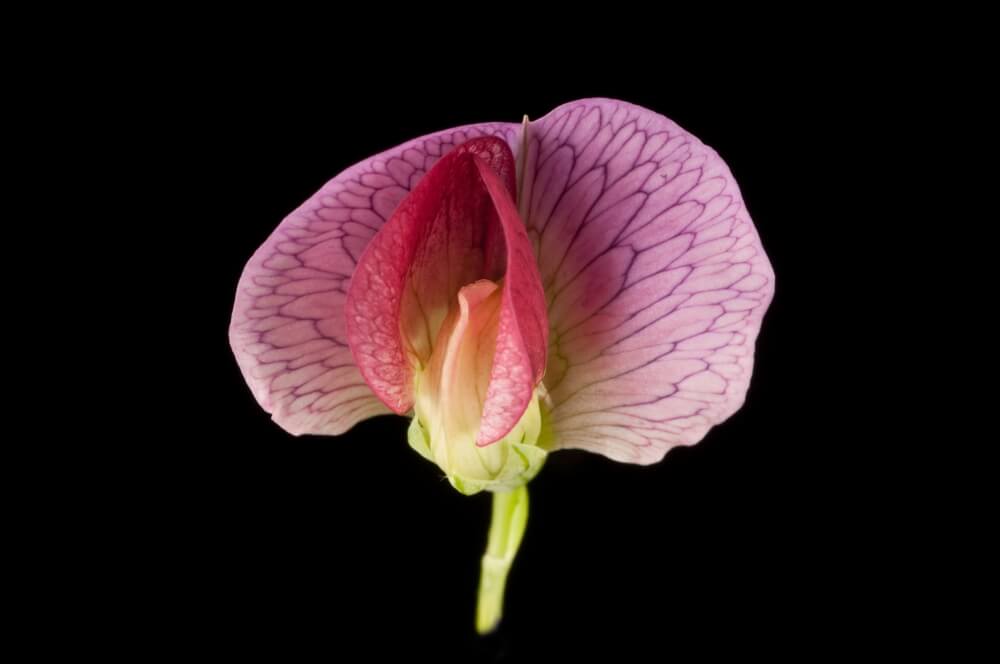Pea plants are more than just your ordinary garden greenery. They hold reasons that made one brilliant scientist, Gregor Mendel, curious. These reasons revolve around their flowers, specifically those in a unique white shade.
You might wonder why these flowers lack the bright colors we often see with blooms. With his curious mind and a keen eye for details, Mendel begins studying how traits are passed from one generation to another.
Mendel plays a major role in the study of pigments. He grew countless pea plants in his garden and watched them closely. In those simple observations, he revealed many secrets of heredity.
So, let’s see how Mendel’s study shows that is the reason for the lack of pigment.

1. White Pea Flowers – Why?
The color of white flowers lies in their genetics. Unlike their colorful flowers, these blooms lack pigmentation, giving them a different pale appearance—this absence of color results from specific genetic variations that decrease the production of pigments in the petals.
Gregor Mendel, the pioneering scientist, dedicated heavy research to understanding the underlying genetic factors that lead to this unique quality.
2. Mendel’s Pea Insights
Gregor Mendel’s work with pea plants changed our thinking about heredity and genetics. Through years of experiments, Mendel observed inheritance patterns and discovered the principles responsible for the passing of traits from one generation to the next.
His insights were limited to traits like flower color and extended to a wide range of qualities.
3. Genetics of White Blooms
At the core of white pea flowers are specific genes responsible for the absence of pigmentation. These genes have variations resulting in the petals’ characteristic white shade.
Mendel’s research provided important insights into the genetic mechanisms responsible for flower color. By studying the patterns of pea plants with flowers, Mendel learned the genetics that give coloration, increasing our understanding of plant genetic traits.
4. Pea Flowers – The White Mystery
The mystery of white pea flowers was not known for many years. Mendel’s experiments revealed that specific genetic combinations lead to the absence of color, which leads to the lack of pigmentation.
This mystery, revealed by Mendel’s fantastic work, surprises scientists and fans, highlighting the deepness of genetic knowledge within the natural world.
5. Passing Flower Colors
Heredity plays an important role in determining flower color in pea plants. Mendel’s experiments showed the patterns of trait inheritance, demonstrating how certain traits, including flower color, are passed down from parent plants to another generation.
Understanding these inheritance patterns is important to know why some pea plants have white blossoms, shedding light on the genetic interactions that shape plant characteristics.
6. Genes and Flower Hue
Within the genetic blueprint of pea plants lie specific genes that hold the role of pigment production. In the case of flowers, variations in these genes lead to the absence of coloration, resulting in the characteristic pale petals.
Mendel’s observations and experiments provided important insights into the genetic fields that give flower color, revealing the reasons behind the unique appearance of white pea blooms.
7. Why Pea Petals are Pale
The pale shade of pea petals arises from specific genetic variations responsible for pigment production. These genetic factors, which determine the flower’s appearance, are identified through Mendel’s meticulous experiments.
The absence of pigmentation leads to the characteristic pale coloration observed in white pea flowers. Mendel’s pioneering research provided answers to this mystery and showed why.
8. Environment Impact on Flower Color
While genetics play a major role in determining flower color, environmental factors can also influence it. Mendel’s studies play an important role in the relationship between genes and the environment. These interactions can lead to variations in flower color, even within a single plant species.
Understanding the environmental impact on flower color adds another complexity to studying plant genetics.
9. No-Pigment Pea Study
Mendel’s study of pea plants with white blooms was instrumental in knowing the genetic basis of coloration. By tracking the inheritance patterns of these no-pigment varieties, Mendel revealed the genetic code responsible for the unique appearance of white blooms.
Through his comprehensive study, Mendel understood how specific genes interact to produce the lack of pigmentation in white pea flowers.
10. Mendel’s Flower Clues
Gregor Mendel’s experiments with pea plants, including those with flowers, provided clues about the genetic mechanisms giving flower color. His amazing work laid the base for understanding heredity and genetic traits.
By understanding the patterns of trait inheritance, Mendel revealed the genetic code that determines flower color in these plants. His contributions continue to be a work of gene research, shaping our understanding of how traits are passed down through generations.
Conclusion
Mendel found out why some pea plants have flowers. It’s because of something in their genes. These special genes cause the flowers to be without any color. This is different from the other pea plants with colorful flowers. Mendel’s hard work helped us understand how this happens.
It’s important because it teaches us how traits are passed down from plant to plant. When we see white blooms on pea plants, we can remember Mendel and his important contribution. This helps scientists and plant lovers understand more about the amazing nature. Mendel’s work still helps people learn new things about plants.
So, we can say a big thank you to Mendel for his smart thinking and hard work.

